Disclosure: This article contains affiliate links. We may earn a commission from purchases at no extra cost to you, which helps our travel content.
The first time I stood before the monumental Gate of All Nations at Persepolis, I forgot to take a photo. For several minutes, my camera hung uselessly around my neck while I simply stared at the colossal winged bulls guarding the entrance to what was once the ceremonial capital of the Achaemenid Empire. This 2,500-year-old UNESCO World Heritage site presents a photographer's paradise that demands both technical skill and historical appreciation. After five visits spanning a decade, I've developed strategies for capturing images that do justice to this magnificent archaeological wonder while navigating its unique challenges. This guide will help you prepare for a week-long photographic expedition to Persepolis during springtime – arguably the most visually rewarding season to document this testament to ancient Persian ingenuity.
Planning Your Photographic Expedition
Persepolis requires more preparation than your average photo destination. Located about 60km northeast of Shiraz in Iran's Fars Province, the site sprawls across a massive terrace built against Mount Mercy (Kuh-e Rahmat).
Before anything else, secure your Iran visa well in advance – a process that typically takes 2-3 months for most Western passport holders. I recommend working with a reputable Iranian tour agency who can provide the necessary authorization code. While independent travel is possible in Iran, having local guidance at Persepolis is invaluable for understanding the historical context behind your photographs.
Equipment selection is crucial. You'll want a versatile kit that balances weight with capability. My current setup includes a mirrorless camera paired with three essential lenses: a wide-angle (16-35mm) for architectural shots, a standard zoom (24-70mm) for general work, and a macro lens for capturing the intricate relief details. Persepolis demands range.
Spring (March-May) offers ideal photography conditions with comfortable temperatures (15-25°C), dramatic cloud formations, and wildflowers dotting the surrounding landscape. The site is open daily from 8:00 AM to 5:00 PM, but serious photographers should plan for at least three full days of shooting to accommodate changing light conditions and unexpected crowds.
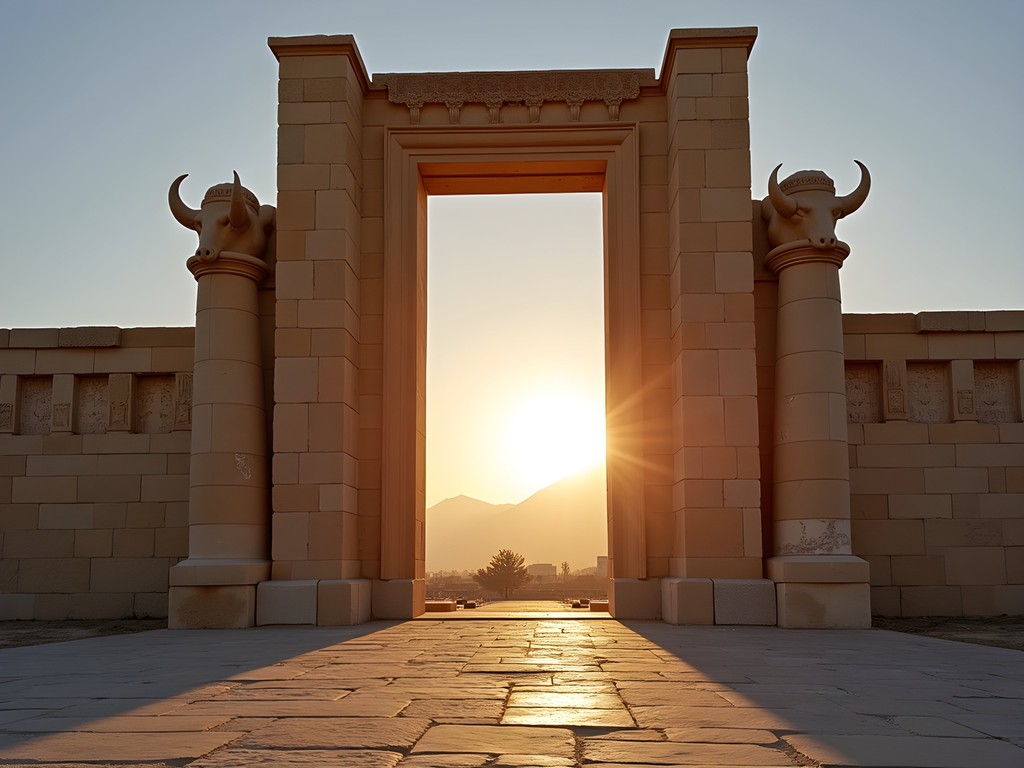
💡 Pro Tips
- Apply for your Iranian visa at least 3 months before your planned trip
- Book accommodations in Shiraz rather than trying to stay closer to the site
- Purchase a detailed guidebook specifically about Persepolis to identify lesser-known photo spots
Golden Hours: Timing Your Shoots
The quality of light transforms Persepolis dramatically throughout the day. My workflow typically involves three distinct shooting sessions:
Morning Magic (7:30-10:00 AM): Arrive at opening time to catch the golden light washing over the eastern faces of the structures. The Apadana (audience hall) with its grand staircase is particularly magnificent during this period as the rising sun gradually illuminates the detailed reliefs of tribute-bearing delegations. The contrast between light and shadow brings the stone carvings to life in ways that flat midday light simply cannot achieve.
Midday Documentation (11:00 AM-2:00 PM): While harsh overhead light isn't ideal for mood photography, it's perfect for documenting details. This is when I focus on close-up work of the intricate reliefs using my macro lens. The direct light reveals textures and inscriptions that remain hidden during other times of day.
Afternoon Glow (3:00-5:00 PM): As the sun begins its descent, the western portions of the site—particularly the Hall of a Hundred Columns and the Treasury—become bathed in warm light. The lengthening shadows create dramatic compositions that emphasize the scale and grandeur of the ruins.
Between these prime shooting windows, I recommend retreating to shaded areas to review images, change batteries, and plan your next shots. The site offers minimal shade, so a portable sun umbrella has become an essential part of my kit during spring visits.
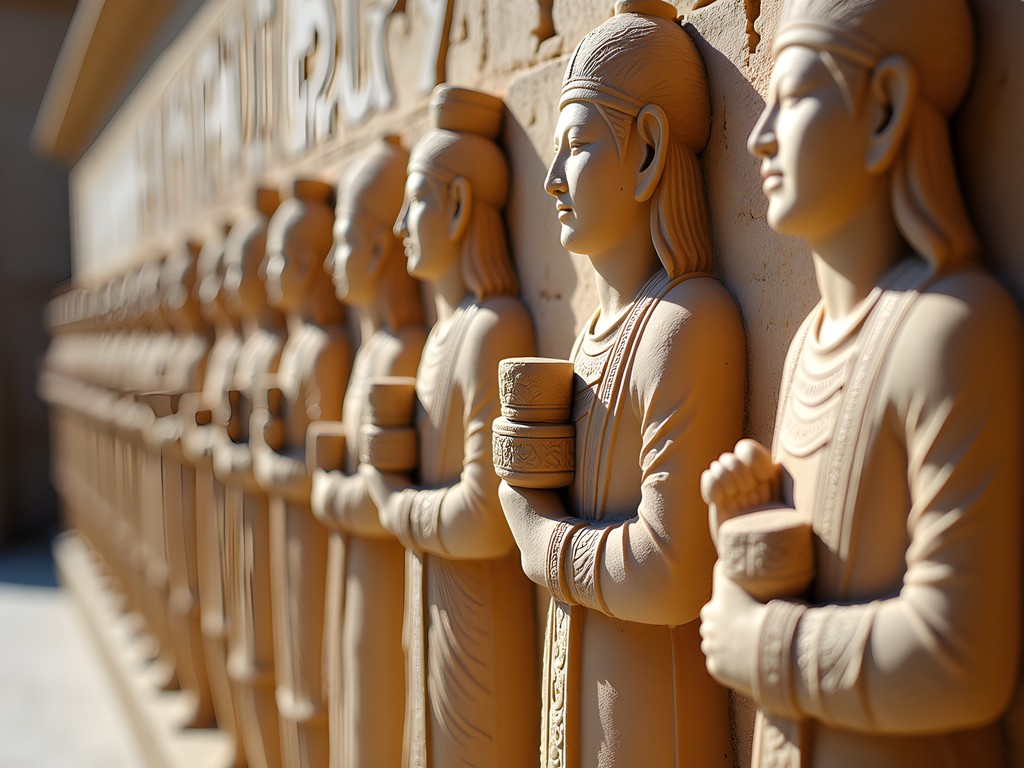
💡 Pro Tips
- Use the official site map to plan your shooting locations according to the sun's position throughout the day
- Bring a compass or use a smartphone app to track the sun's movement across the site
- Schedule at least one full day to simply scout locations before committing to serious shooting sessions
Navigating Crowds and Restrictions
Persepolis attracts visitors from across Iran and around the world, with crowd patterns that savvy photographers must learn to navigate. Tour groups typically arrive between 9:30 AM and 11:00 AM, creating challenging shooting conditions at popular spots like the Gate of All Nations and the Apadana staircase.
My strategy involves "working the edges" – focusing on less-visited areas during peak hours and returning to popular spots during lunch breaks (typically 12:30-2:00 PM) when many tour groups retreat to nearby restaurants. The far eastern sections of the complex, including the unfinished gate and the royal tombs cut into the mountainside, often remain relatively quiet even during busy periods.
It's essential to understand photography restrictions before visiting. Tripods are technically prohibited without special permission, though this rule is inconsistently enforced. I've found that a compact carbon fiber travel tripod that can be quickly collapsed and stowed in my bag offers a good compromise. When setting up, I work quickly and respectfully, always yielding to other visitors.
Drone photography is strictly forbidden throughout the site and surrounding areas – don't even bring one in your luggage as it may be confiscated upon entry to Iran. Instead, consider visiting the nearby mountain viewpoint for broader contextual shots of the entire complex against the landscape.
While photographing local visitors is generally acceptable, always ask permission first through gestures if there's a language barrier. I've found that most Iranians are delighted to be photographed at this source of national pride, and these human elements can add valuable scale and contemporary context to your archaeological images.
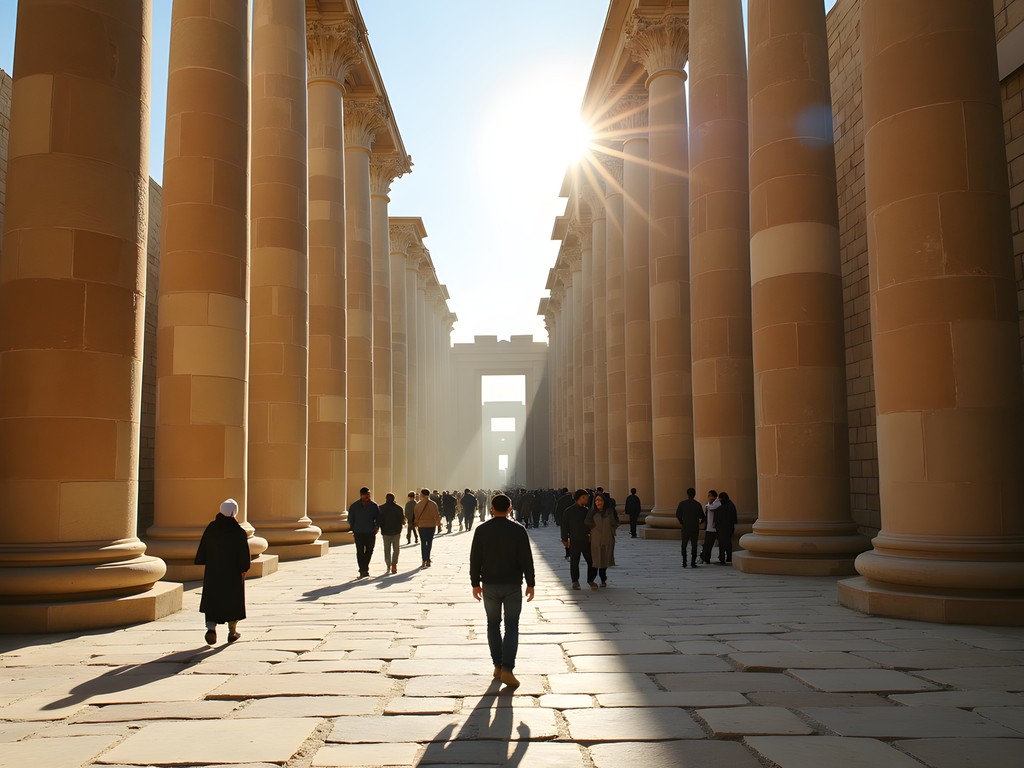
💡 Pro Tips
- Visit during weekdays (Sunday-Thursday in Iran) for smaller crowds
- Learn basic Farsi photography terms like 'May I take your photo?' (Mishe aks begiram?)
- Keep model release forms handy if you plan to publish images with identifiable people
Capturing Architectural Details & Relief Carvings
The true photographic treasure of Persepolis lies in its extraordinarily preserved relief carvings – among the finest surviving examples of ancient stone craftsmanship anywhere in the world. These detailed narratives require technical precision and thoughtful composition to capture effectively.
For relief photography, directional lighting is crucial. Early morning and late afternoon provide natural raking light that emphasizes the three-dimensional quality of the carvings. During midday, I create my own directional light using a collapsible reflector to bounce light across the surface at an angle, revealing details that would otherwise appear flat.
Composition is equally important. While it's tempting to shoot entire wall sections, the most compelling images often come from isolating specific narrative elements or characters. Look for emotional moments: the face of a lion biting into a bull, the determined expression of a Persian guard, or the delicate rendering of flowing robes and jewelry.
Don't overlook the architectural engineering details that make Persepolis remarkable. The perfectly fitted stone blocks, innovative drainage systems, and column joining techniques all tell the story of ancient Persian technological advancement. These technical elements particularly appeal to architects and engineers in your audience.
Color calibration matters significantly here. The distinctive honey-colored limestone of Persepolis shifts dramatically under changing light conditions. I always include a small color calibration card in my first shots of the day, allowing for consistent post-processing that accurately represents the site's unique palette. A color calibration passport tucked into your camera bag is worth its weight in gold for maintaining color accuracy across your entire Persepolis portfolio.

💡 Pro Tips
- Use a polarizing filter to reduce glare on polished stone surfaces
- Include a scale reference (coin or ruler) in at least one detail shot of each major relief
- Shoot multiple exposures of important reliefs at different times of day to capture varying details
Beyond the Terrace: Expanding Your Persepolis Portfolio
While the main terrace complex rightfully dominates most photographic itineraries, a comprehensive Persepolis portfolio should include several nearby sites that provide historical context and visual variety.
Naqsh-e Rustam, located just 12km northwest of Persepolis, features massive royal tombs carved into a cliff face. These cross-shaped cuts into the mountain housed the remains of Darius the Great and his successors. The site offers dramatic sunrise photography opportunities, with the early light illuminating the tomb facades while the cliff remains in shadow. I typically arrive 30 minutes before sunrise to set up, bringing a thermos of coffee for the wait.
Pasargadae, about 50km north of Persepolis, contains the surprisingly modest tomb of Cyrus the Great, founder of the Persian Empire. The stark simplicity of this structure contrasts beautifully with the elaborate decorations of Persepolis, offering visual counterpoint in your final collection. The surrounding plain, dotted with wildflowers in spring, provides opportunities for landscape compositions that place ancient monuments in their natural context.
The modern town of Marvdasht near Persepolis offers fascinating juxtapositions of contemporary Iranian life against the ancient backdrop. Local markets, traditional crafts workshops, and the daily rhythms of town life provide human interest elements that complement your archaeological studies. I've found that these images often become some of my most personally meaningful from each trip.
For these excursions beyond the main site, transportation becomes crucial. While taxis are available, having flexibility for early morning or late evening shoots is invaluable. On my last visit, I arranged a private driver through my hotel in Shiraz for the week, allowing me to create a custom schedule optimized for photography rather than tourism.
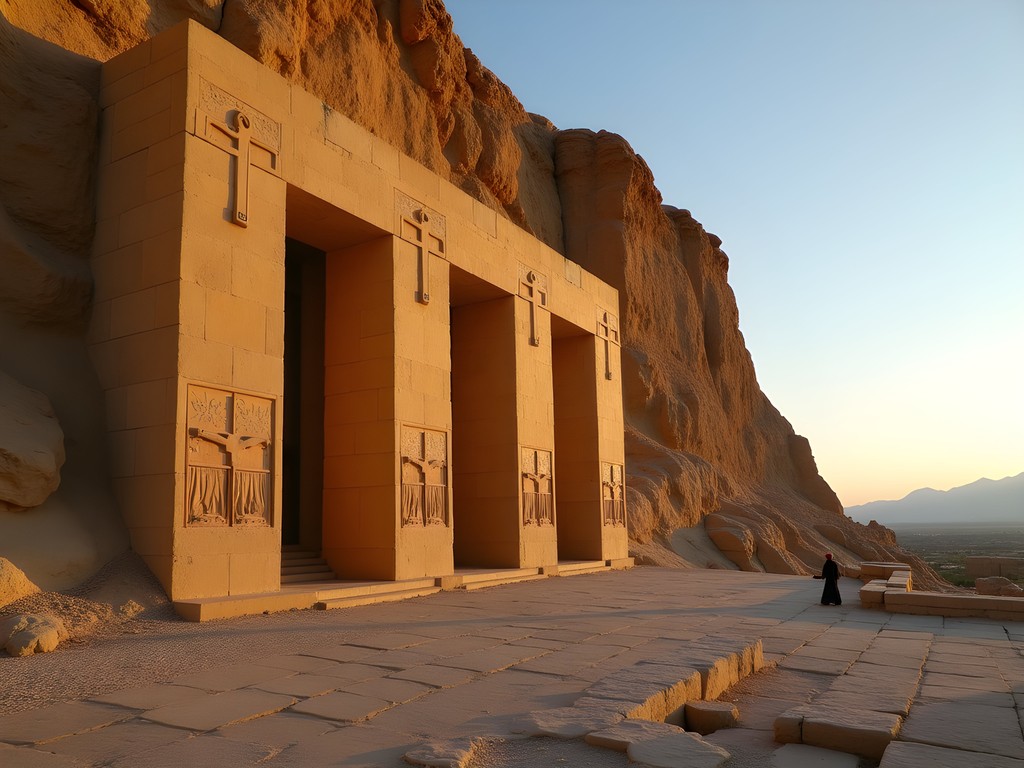
💡 Pro Tips
- Visit Naqsh-e Rustam at sunrise for dramatic lighting on the cliff-cut tombs
- Bring a telephoto lens (70-200mm) for capturing distant details at Pasargadae
- Ask permission before photographing local craftspeople in Marvdasht, and purchase small items as a gesture of appreciation
Final Thoughts
Photographing Persepolis is both a technical challenge and a profound privilege. Standing where Darius and Xerxes once walked, your camera becomes a bridge across 2,500 years of human history. The images you create here will likely rank among the most meaningful in your portfolio – not just for their aesthetic quality, but for the stories they tell of human ambition, artistic achievement, and the inevitable passage of time.
As you pack away your gear after that final golden hour shoot, take a moment to simply absorb the atmosphere without the camera between you and history. The true value of a photographic expedition to Persepolis extends far beyond the digital files you'll bring home – it lies in the deepened understanding of our shared human heritage and the visual stories you're now equipped to share with others. May your lenses capture not just the stone and light, but something of the spirit of this remarkable place.
✨ Key Takeaways
- Plan for multiple days of shooting to work with changing light conditions and crowd patterns
- Focus on early morning and late afternoon for dramatic lighting on reliefs and architecture
- Balance wide architectural shots with intimate details of the remarkable stone carvings
- Expand your portfolio by including nearby sites like Naqsh-e Rustam and Pasargadae
📋 Practical Information
Best Time to Visit
March to May (spring)
Budget Estimate
$1,500-2,500 for one week excluding international flights
Recommended Duration
5-7 days
Difficulty Level
Challenging

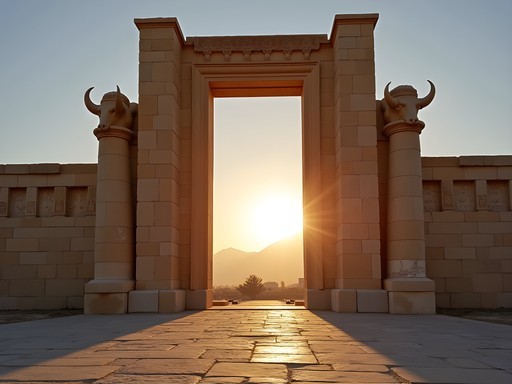

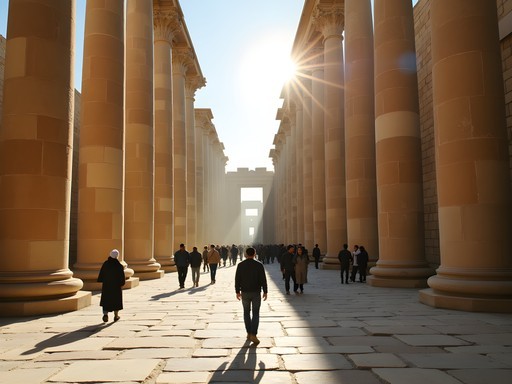
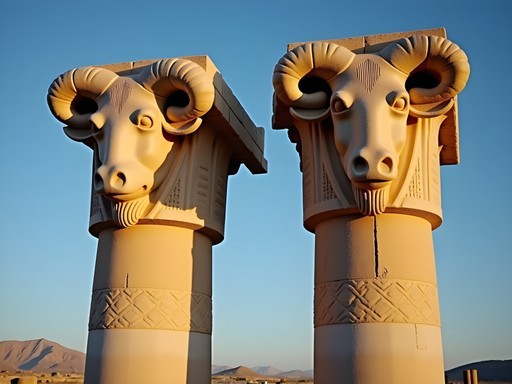











Comments
beachgal
Great post! How did you deal with the harsh midday sun? I'm going in August and worried about the lighting conditions.
sunnyexplorer
Not the author but when I went in summer, I focused on detail shots during midday and saved the wide shots for early morning/late afternoon. Also bring a hat and lots of water - it gets HOT out there with zero shade!
beachgal
Thanks for the tips! Definitely planning for those early mornings then.
Sophia Gomez
Evelyn, your post couldn't have come at a better time! I'm heading to Iran next month for a business conference and planning to extend my stay to visit Persepolis. I was wondering about the crowd situation - is it better to hire a guide who can navigate the best photo spots, or is it straightforward enough to explore independently with a good map? Also, did you find that certain areas were restricted for photography? I've heard mixed things about tripod permissions at historical sites in Iran. Your section on the relief carvings was particularly helpful - I'm bringing my macro lens specifically for those details!
beachgal
Sophia, I was there in September and had no issues with a tripod, but they're strict about drones (absolutely forbidden). A guide is worth it - ours knew exactly when certain areas would be in shadow or sunlight. Made a huge difference for photos!
winterzone
Just got back from Iran and Persepolis was definitely the highlight! Your tips about respecting local customs while photographing were spot on. I found wearing neutral colors helped me blend in better for those candid shots. One thing I'd add - the site is MUCH bigger than I expected, so comfortable shoes are a must. My feet were killing me by the end of the day!
exploregal
So true about the size! I walked over 15,000 steps just at Persepolis.
winterpro
Those golden hour shots are incredible! Adding this to my bucket list right now.
sunnyexplorer
This post brought back so many memories! I visited Persepolis last year and was completely overwhelmed too. That morning light hitting the stone is pure magic. One tip I'd add - bring a polarizing filter if you have one. It really helps cut the glare on the polished surfaces and makes those relief carvings pop. Did anyone else find it challenging to capture the scale of the place? My photos couldn't do justice to how massive everything feels when you're standing there.
Sophia Gomez
Yes! The scale is impossible to capture. I ended up using people in my shots for perspective. And +1 on the polarizing filter recommendation. I'd also suggest bringing a zoom lens for those detailed relief carvings high up on the walls.
sunnyexplorer
Good point about including people for scale! I used my travel tripod for some long exposures at dawn - barely anyone there that early.
SunsetChaser
That shot of the Apadana staircase in golden hour light is absolutely stunning! What time exactly did you take it?
Evelyn Rogers
Thank you! That was about 30 minutes before sunset in late February - around 5:15pm. The light hits those reliefs perfectly at that angle.
HistoryBuff42
Going to Iran in May - did you have any issues with photography permits or restrictions? Heard mixed things about what's allowed.
Evelyn Rogers
At Persepolis specifically, I didn't need any special permits beyond the regular entrance ticket. Just be respectful of any areas marked as no-photography (rare at this site) and you should be fine. Enjoy your trip!
HistoryBuff42
Thanks so much! That's a relief.
TravelingLens
These photos are incredible! Adding Persepolis to my bucket list right now.
Casey Andersson
Evelyn, your post is absolutely spot-on! I was at Persepolis last November and wish I'd had your guide beforehand. The contrast between the honey-colored stone against that deep blue Iranian sky is something my photos barely do justice to. One tip I'd add - I found my polarizing filter absolutely essential for managing the harsh midday glare on the stone surfaces. Also worth mentioning for anyone planning a visit: hiring a knowledgeable local guide made a huge difference in understanding what I was photographing. Our guide knew exactly which angles showcased the most intricate details of those incredible Achaemenid reliefs. Did you stay in Shiraz and make a day trip, or overnight closer to the site?
Evelyn Rogers
Great tip about the polarizer, Casey! I stayed in Shiraz and did two separate day trips - one for scouting and one for serious shooting. Gave me the chance to plan my shots after understanding the layout. Your photos from Iran on your blog are stunning, by the way!
photowanderer
This post brought back so many memories! I visited Persepolis last year and was equally stunned by those massive columns and reliefs. Totally agree about the golden hour lighting - it makes those stone carvings practically come alive with shadows. I found that getting there early morning (like 8am) meant I could photograph the Gate of All Nations with barely any tourists in frame. Did you have any issues using a tripod there? The guards were a bit strict when I visited but maybe I just got unlucky.
Evelyn Rogers
Thanks for sharing your experience! You're right about early morning being magical - those first light rays hitting the stone are worth the early wake-up. Regarding tripods, they were actually fine with mine as long as I stayed in the designated visitor areas. Maybe the rules have relaxed a bit since your visit?
photowanderer
That's good to know! I'll be heading back there next spring and will definitely try using my tripod again. Your shots of the detailed reliefs are incredible - what lens did you use for those close-ups?
Evelyn Rogers
For the close-ups I used a 24-70mm with extension tubes to get really tight on those details. The lighting was tricky but worth the effort!
Venture X
Premium card with 2X miles, $300 travel credit, Priority Pass